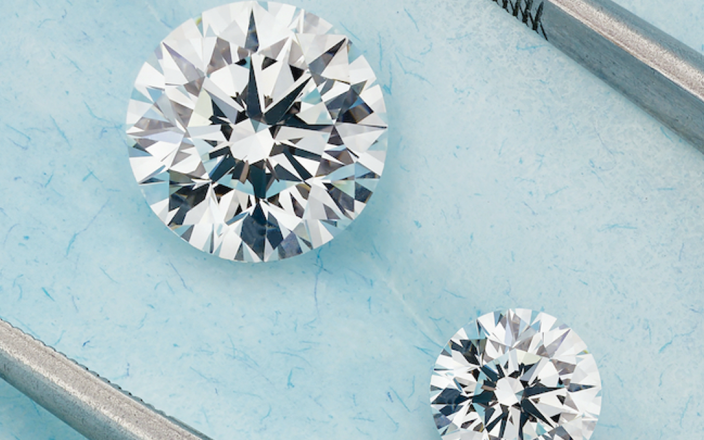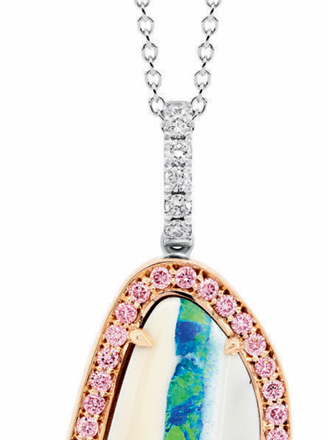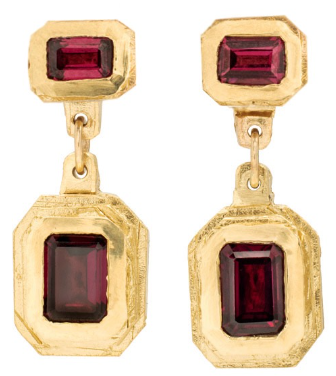
Craig Miller
CEO, JC Jewels
How has JC Jewels adapted to industry changes over the years, and what key strategies contribute to its enduring success?
Frequently, business owners are reactive to change. Constantly adapting and changing, trying to keep up with advances—like it or not, this is the fast-paced world we live in.
At the startup phase of JC Jewels, we looked at our industry from a bird’s eye view, and change was on the horizon. As diamond wholesalers, we wanted to be a catalyst to change—as opposed to the inevitable change forced upon us. We questioned why wholesale diamond companies were still running their businesses with physical books, literally with pen on paper in some cases, and operating with limited digital functionality or user experience. We saw an opportunity to develop technology to excite the customer journey and the user experience. We took the wholesale diamond game digital and redesigned what a modern-day diamond merchant would look like, in line with today’s modern world.
Innovation, risk, and belief in change motivated us to start JC Jewels, the first Australian local diamond and jewellery marketplace. Our goal was to disrupt the ways of the past with technology and change how jewellers buy their diamonds and jewellery. We identified how this new model would empower us to deliver the best local diamond prices in our market, give our clients more choices of goods, help jewellers close more sales, achieve higher margins and increase the jewellers’ profitability through efficiencies of our new tech model.
Essentially, our goal was to stop adapting to change and become the catalyst to change. This goal was a dream at first, and with our industry’s support and belief in our vision for change, it is now a reality that is helping our clients make more money.
The JC Jewels marketplace brings inefficiencies that laid the path to a more sustainable model and future—for us and our clients. We had made this transformation to secure our future. I have written before how change is the only constant. When I reflect on the past few years, I can humbly say that JC Jewels played a major role in changing how jewellers in our market source their diamonds and jewellery. For this, I continually thank our clients for trusting in us and this productive change, one that benefits us all.
By looking at the global diamond industry today, there is no doubt there is a process of a structural shift.
According to Wikipedia, in economics, structural change is a shift or change in the basic ways a market or economy functions or operates. Lab-grown diamonds and technology like JC Jewels diamond and jewellery marketplace and others like us globally have monumentally reshaped our industry forever; for some, this has created an opportunity, and for others, a challenge.
Could you highlight a key challenge the company encountered and share how JC Jewels successfully navigated and overcame it?
The imminent decline of lab-grown prices challenged us all in the industry, which was expected and in line with the economics of any new product entering a market, whereby prices continually decline until reaching a cost-plus environment and settling for the most part. The transition from the traditional outdated analogue way of ordering to tech purchasing demanded training on buying certificates, videos and images, which empower jewellers to become diamond buyers. Once trained, our clients get to see all the goods on the market, not only the goods the local diamond merchant buys to the warehouse and sends out on memo, and let’s face it, they buy the bargains they know will make more profits for them.
Buying from JC Jewels means our clients get to select the pick of the litter, resulting in higher margins and leaving more profit for them. JC Jewels manages all the painstaking logistics of bringing the goods to your doorstep and the international payment processing.
large inventories of stock in an environment where prices were continually dropping before settling, I take pride in saying JC Jewels protected or safeguarded our clients during this period to the best of our ability and this was premeditated with effort.
Our model encouraged our sales team not to push sales on jewellers for inventory purchases. This was shown through our data and client feedback where 90 percent of our client orders were purchased in real-time for custom client orders instead of going into the windows to showcase and warehouse the goods at the risk of being exposed to declining lab-grown prices.
Another advantage was the reduction in our client’s capital investment with warehousing stock. Today, our clients report better cash flow with less capital investment and minimal losses on inventory price reduction, freeing up capital to invest in other areas such as marketing and customer acquisition.
Could you share specific success stories or examples where retailers have benefited from JC Jewels’ training programs and achieved notable results?
Being the first mover in lab-grown meant we were responsible for educating our local market. It was not an easy job being the only company executing the role—we had hundreds of hours on Zoom training calls. We were pioneers in this respect. We took ownership of this important element because education and transparency are imperative.
Traditionally, jewellers hold large inventories of diamonds in stock, demanding capital investment, often hampering cash flow, and calling in diamonds on consignment when needed from their local diamond merchants. The system worked for decades, but the local goods come at a premium pricing to justify the merchant’s warehousing costs. This model is quickly becoming outdated as jewellers discover the efficiencies that technology onboards.
The transition from the traditional outdated analogue way of ordering to tech purchasing demanded training on buying off certificates, videos and images, which empowers jewellers to become diamond buyers. Once trained, our clients get to see all the goods on the market, not only the goods the local diamond merchant buys at the warehouse—and let’s face it, they buy the bargains they know will make more profits for them. Buying from JC Jewels means our clients get to select the pick of the litter, resulting in higher margins and leaving more profit for them. JC Jewels manages all the painstaking logistics of bringing the goods to their doorstep and international payment processes.
How do you build and maintain trust with clients, and what steps does JC Jewels take to ensure the quality and authenticity of the diamonds in its inventory?
Trust, transparency, and authenticity are the foundation of all we do. The result is in our client retention. We assess every diamond sold when ordered, and if we find issues with the diamond that concern us, our clients are notified.
We assist them in finding a better option to ensure every order delivers satisfaction at all times. Upon arrival at our office, we conduct additional quality controls and testing. With supply, we vet all suppliers thoroughly, and we only align our company with the best lab-grown growers and mined diamond manufacturers, focussing on the quality of the goods.
For example, as is the case with mined diamonds, you can buy good mined diamonds and bad mined diamonds. With lab-grown it is the same, some growers cut corners when growing the goods to grow them faster. This can directly impact the diamond and its performance. We identify these growers and do not work with them.
The custom software built at JC Jewels plays a crucial role in the efficiency, reliability, and accuracy of your feeds. Can you provide more details on how this technology enhances your operations and sets JC Jewels apart in the industry?
Traditional diamond merchants incur the high cost associated with warehousing goods. Our technology and business model empower us to sell on lower margins, making us exceptionally competitive in our market. Our secret formula is our custom technology and logistics management.
Our success is dependent on the reliability of our custom-built technology and the technology our supply chain can deliver. Maintaining this in real-time is no easy feat, I continually give credit to my tech team. It is one thing to develop new technology, but another to integrate it with outdated technology suppliers often have in place, creating additional work for our tech department.
From inception, our portal offered world-class features to excite the selling process and modernise it, for example, our Show Client feature, where our clients SMS their customers any diamond video, certificate, and image and set the retail price in seconds.
Our in-house tech team are continually developing technology to assist our clients’ businesses. To help elevate and excite their selling process, this year, we launched a new retail tool, an updated in-store client-facing white-label version of JC Jewels’ software, whereby the jeweller receives their own white-label consumer-facing version.
Our clients can set their retail margins and present our portal with their branding. We built this software because we don’t allow clients to list our goods on public domains to avoid price wars at the retail level, adding another layer of protection for our clients to yield better margins.
Looking ahead to 2024, what are the key goals and initiatives that JC Jewels is planning to pursue, and how does the company envision overcoming potential challenges in the evolving diamond wholesale and jewellery sector?
Globally, through 2023, we witnessed rising interest rates, economic instability and persistent inflation impacting luxury goods sales. Mined diamonds were in oversupply, resulting in substantial price reductions, and lab-grown yielded substantial growth but saw further price reductions.
I am going into 2024 optimistically. Our technological move has put us ahead and positioned us for success. I believe we will see the effects of a structural shift that is taking place in our industry. We saw this coming, and our technology will assist in our success as the industry transitions. This shift was the main reason we developed JC Jewels the way we did. We feel our modernised wholesale diamond business embarked on a mission to make monumental changes within the wholesale diamond space, and this has placed us in a unique position with what may come as we witness the landscape changing. This change will create opportunities for some and challenges for others.
We witnessed mined diamond prices fall substantially last year. Will they recover, and to what extent? On the lab-grown side, according to industry analyst Paul Zimnisky in a recent article, the shift toward lab-grown diamonds is not just a trend. Sales of these diamonds skyrocketed from less than $1 billion in 2016 to nearly $12 billion in 2022. This trend is accelerating, with lab-grown diamond sales surging by 38 percent from 2021 to 2022. Not surprisingly, given the value proposition lab-grown brings to the consumer, this has brought colossal change to our industry beyond question.
Regarding what to keep an eye on in 2024, if retailers can maintain the healthy margins lab-grown brings and wholesale prices settle, the jewellers will benefit for time to come. Amish Shah, a pioneer of the lab-grown market said, “The diamond industry needs to transform from a component cost model to value creation. The true value lies in what is created with the component, not just the component itself.”
Retailers must maintain healthy margins. Lab-grown has brought in more unit sales, but it has undoubtedly impacted retailers’ revenue. The margin game at the retail level has never been more important and can make or break if not nurtured now and forever. 2024 is a year to focus on your brand and its value to your client, move away from selling diamonds as a commodity and focus on the emotional satisfaction they bring.
In a rapidly evolving industry, what advice would you give to aspiring jewellers and diamond retailers to navigate changes, embrace innovation, and succeed in the competitive marketplace?
Change is the only constant—if you’re not engaging in change, you’re not evolving. Don’t get left behind. This world is moving fast, and your business must follow suit. Deep dive into what your client’s expectations will look like three years from now, and start working towards it. Take risks and try new things. If you mess up, fix it fast and keep at it.


